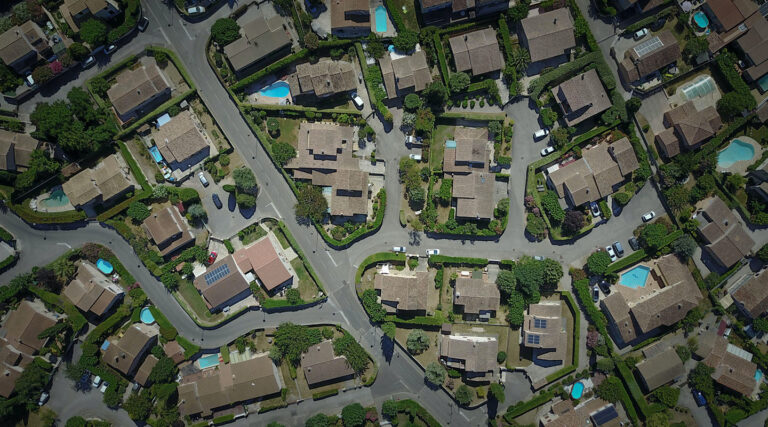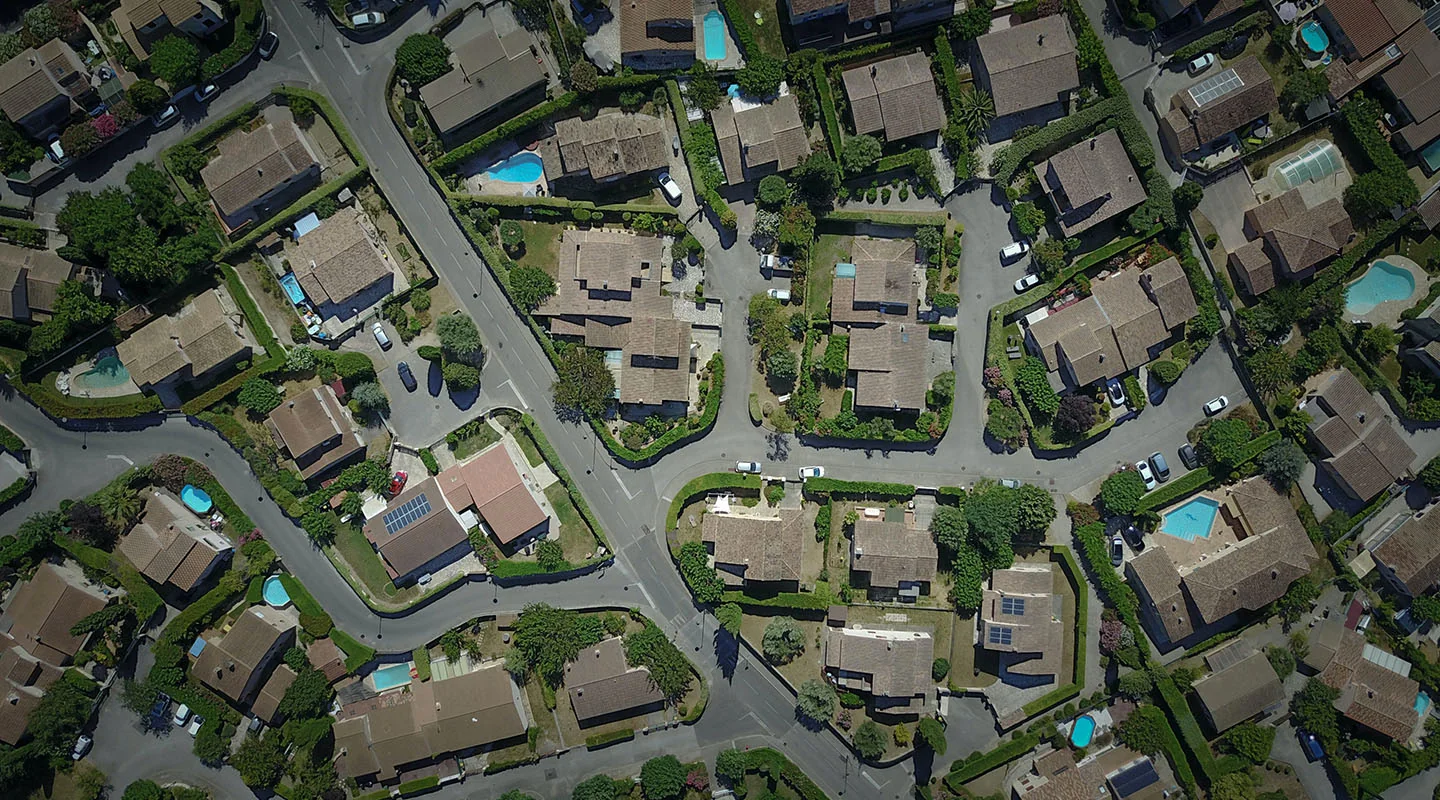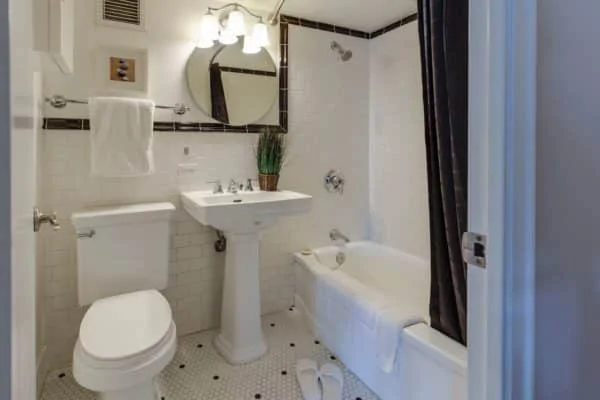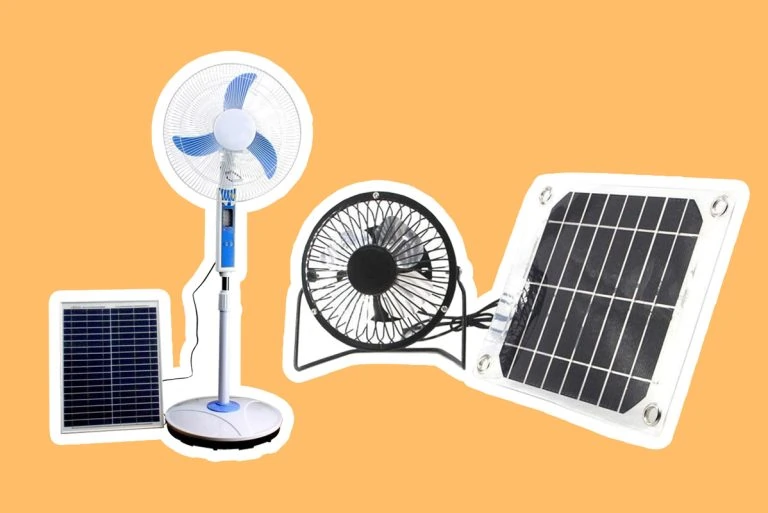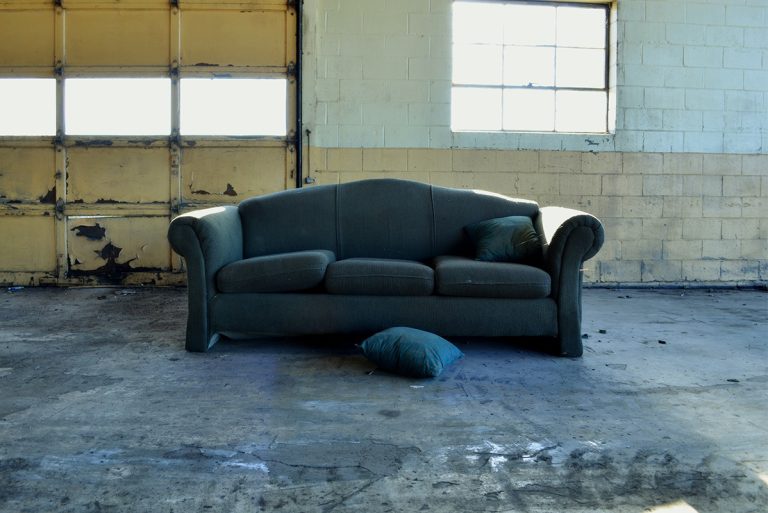Cities and their surrounding urban developments have been expanding for centuries. But since the 20th century, the trend for vast urban and suburban sprawl has accelerated, creating massive conurbations that consume undeveloped land and natural resources.
In this article, we share the causes, effects, and solutions for urban sprawl and how it will impact the implementation of sustainable cities in the coming years.
What is urban sprawl?
Urban sprawl is the uncontained spread of urbanized areas into undeveloped land and greenspaces. Sprawl can often be recognized by its development aesthetics and street patterns that may be inconsistent with the city. It is also known as urban encroachment or suburban sprawl.
The unrestricted spread includes buildings and infrastructure like:
- Housing
- Shopping centers
- Roads
- Offices
- Recreation and entertainment facilities
- Schools and medical services
The massive expansion of urban areas has taken place without thought given to the wider social and environmental impact. As the sprawl spreads outwards from the city the buildings often become more haphazard, lower-density, and poorly planned and integrated with the city.
The origins of urban sprawl
Throughout the previous great civilizations, notable cities of antiquity like Rome, London, and Jerusalem were contained and walled. This fortification was routine to protect against enemy invasion and continued well beyond the middle ages.
As history progressed, changes in warfare, increases in trade, and, most importantly, the industrial revolution led to the loss of city walls and the growth and outward spread of cities. People began to migrate from rural areas to urban centers to take advantage of plentiful and consistent work.
Major industrialists often provided housing for their workers, creating the beginnings of urban sprawl. This phenomenon has been seen globally as major cities have risen to become nations’ primary commercial and employment centers.
Urban sprawl continues in the United States
America is home to some of the world’s largest conurbations, including BOSNYWASH (Boston, New York City, and Washington), and Houston–The Woodlands–Sugar Land, the fifth most populated region in the U.S. However, how America’s urban zones are expanding could jeopardize the environment and the community cohesiveness on which the nation has thrived.
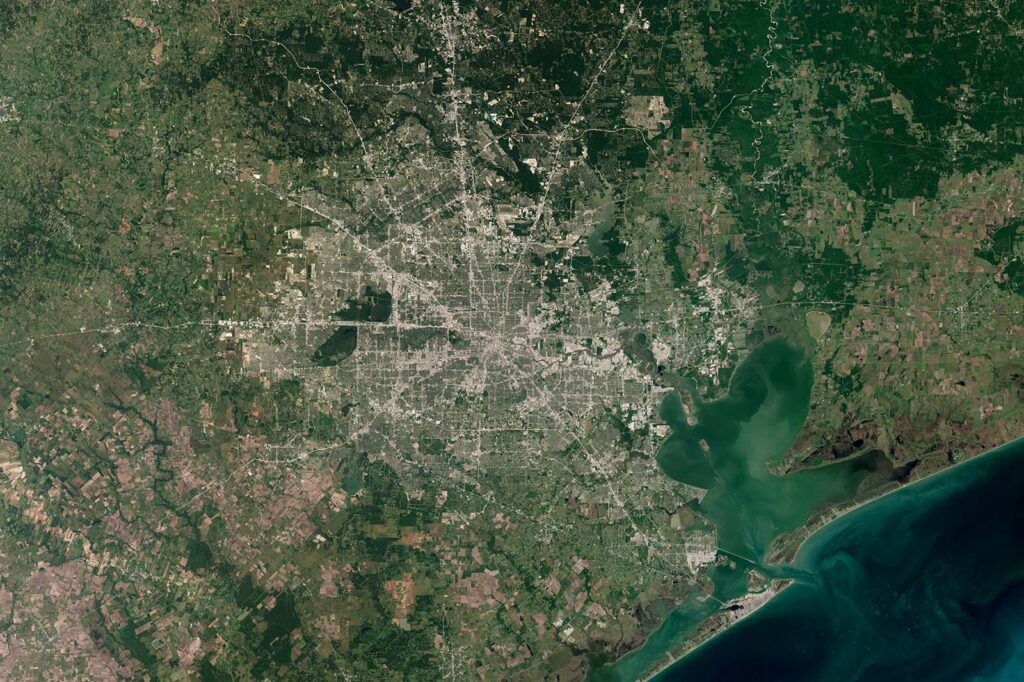
Source: Wikimedia / Copernicus Sentinel-2, ESA
Scientists and policymakers have long-standing concerns that these sprawling suburban development patterns are destroying the environment through diminishing greenspaces and natural habitats, and the pollution of land, air, and water. As there is a concerted move towards more sustainable communities in the 21st century, a consensus is emerging that urban sprawl will have to be addressed.
Key features of urban sprawl
There is no universally agreed definition of urban sprawl but the following features are noted in many urban areas that have spread uncontrollably:
1. Spiral outward growth pattern
Studies of large conurbations and urban sprawl have characterized a spiral growth pattern, with arms fanning outwards along the main routes out of the city. Compared to the true city which is relatively compact, the sprawl is lower density.
This is corroborated by a study that found that the majority of new housing built in the US (80%+) are single-family dwellings sited outside urban areas on an acre or more of land.
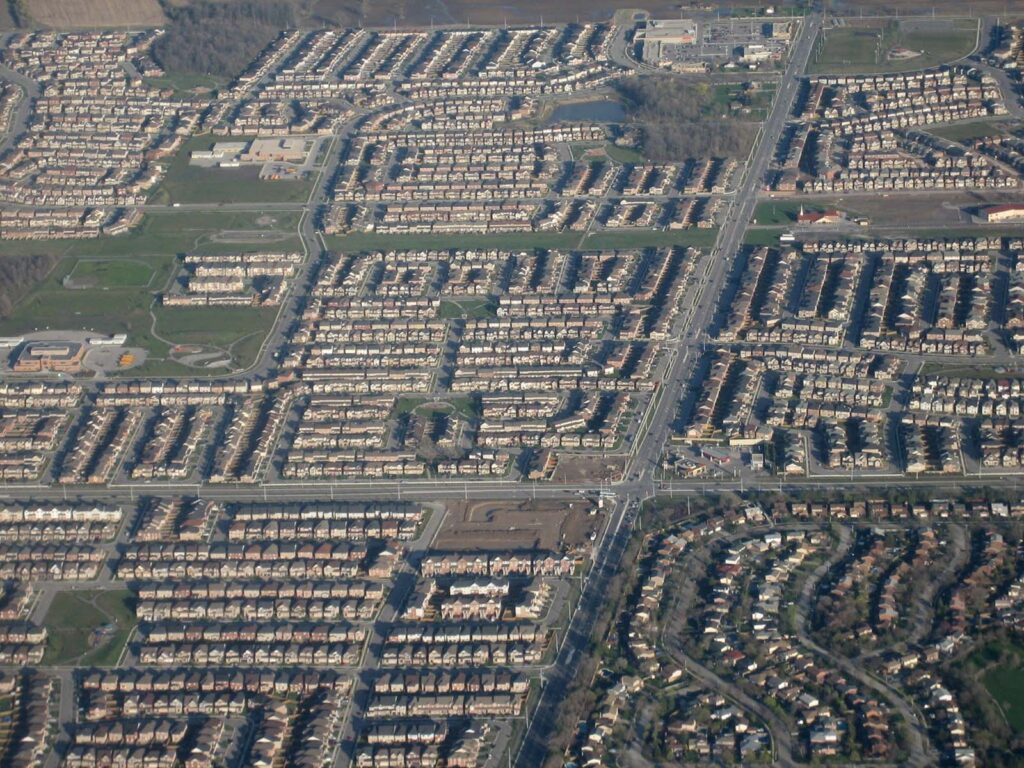
Source: Wikimedia / SimonP
2. A haphazard development pattern
Urban sprawl shows an irregular pattern of spread with dispersed construction that eats further and further into rural areas. Within the sprawl, variously sized pocks of undeveloped land lead to much more land becoming urbanized than if a town planner coherently organized the construction.
3. Strips
Another feature of sprawl is strips of ribbon development that springs up on either side of a major arterial road leaving the city. This type of development is unnaturally linear and presents a road safety hazard as communities have to cross high-speed highways to access shopping, restaurants, and other local amenities.
These neighborhoods primarily cater to drivers and may leave non-driving residents without adequate access.
4. Low-density dwellings
The properties that spring up in urban sprawl are largely detached single-family homes. This type of property is part of the American dream and an aspiration for many growing families in America. Developers make huge profits on building these large-lot single-family homes on an acre or more of simply landscaped land.
This has led to the majority of land development in the U.S. being either:
- Urban expansion
- Large-lot development

Source: Wikimedia / Nathan Metcalf
The problem is that these properties are forming the majority of U.S. property development and consuming large amounts of previously productive land. However, with careful design, homes can be extremely resource efficient and minimize their harm to the environment through reduced consumption of natural resources.
5. Short-car journeys
In suburban sprawl, the car is king, and residents have a massive reliance on their cars for even the most basic journeys. Sprawl areas consist of vast residential areas with few shops or neighborhood amenities because homeowners drive their cars everywhere.
Residents drive in and out of the residential areas by car. Nothing is within walking distance, but short car journeys are the most polluting.
6. Blurred boundaries with true rural areas
Urban sprawl has led to a blurred boundary between urban and rural areas. Between 1960 and 1990 more than a million acres of rural land were taken for housing development. These massive amounts of land impact current and future agricultural productivity.
Massive consumption of agricultural land may not be easily discerned with one or two developments in a single rural locality, but the sprawl becomes apparent when viewed at a regional level.
7. Development is single use
Sprawl areas developed with specific areas being reserved for single-family housing, with roads connecting the different areas. Residents in sprawl neighborhoods live in expansive areas that only have new-build housing. They then need to travel to retail parks and malls to shop or enjoy entertainment. The excessive use of land expands to large lawns and golf courses.

What are the causes of urban sprawl?
Urban sprawl is driven by the movement of people with distinct socioeconomic drivers for the demand for sprawl housing. Here are the main causes of urban sprawl:
Cheaper land
The biggest driver of sprawl developments is the lower price of suburban and rural land. A single-family home in the ‘burbs is often cheaper than a cramped city apartment. The lower land means that families can get much more space for their dollar, which motivates them to leave city centers, moving further and further out of the city.

Lower municipal taxes
Another motivation for buying property in sprawl developments is the lower local tax rates in suburban areas. This reduces the cost of living in the sprawl compared to the city center.
Improving incomes and social mobility
The post-war years have seen a sustained rise in incomes and living standards. This has enabled increasing numbers of people to afford a property further out of town.
The search for a better quality of life
Given a choice, higher-earning families opt to live in low-density neighborhoods with much more space. Out-of-town sprawl developments offer larger properties with more living space and locations on the margins of the nearest metropolitan area.
The preference for living at the urban fringe has not changed for decades with several generations pursuing the American dream of home ownership and raising a family in new-build low-density neighborhoods.
Congested living in inner-city neighborhoods
Urban areas have continued to be densely populated as people are drawn to them for work and lifestyle. Increases in the population of cities cause them to grow beyond their capacity, pushing people outwards. Many sprawl-dwellers are motivated by a desire for green spaces, trees, and safer neighborhoods that have been neglected in urban planning.
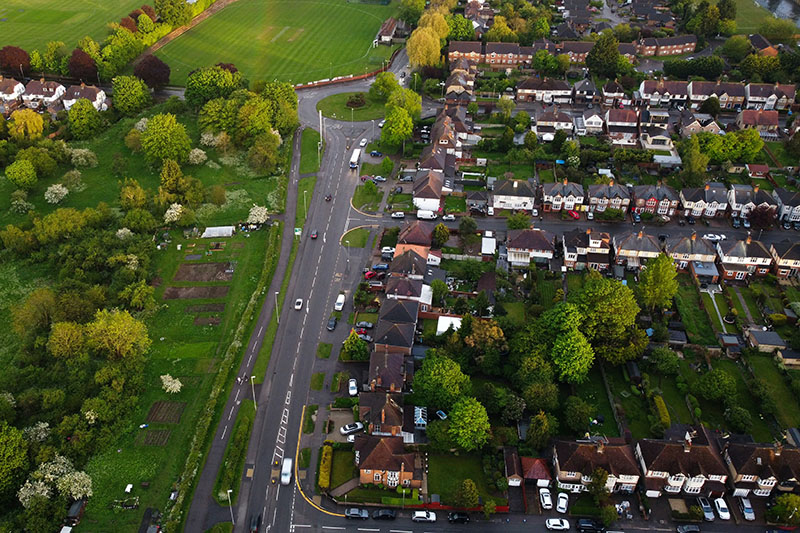
Availability of nearby commuter solutions
Residents are attracted to these sprawling suburban neighborhoods by the availability of infrastructure (road, bus, rail) that can take commuters back into the city for work. Decreasing commuter costs and the relatively low price of gasoline make life outside of the city easy. The cheaper commuter costs add to the appeal of suburban sprawl living.
The effects of urban sprawl
Heavy marketing of the white picket fence lifestyle of suburban living continues to drive urban sprawl more than 60 years after marketers dreamed up the ad images. But now, sprawl is increasingly attracting opposition, particularly because of its marked environmental effects.
Consumption of land
The acceleration of urban sprawl has consumed massive amounts of agricultural land. Big increases in urban populations have led to the aggressive spread.
An example is Chicago’s growth which had growth of 48% within 45 years but land coverage in excess of 160%. Also, in Boston, the amount of land developed in the last four decades exceeds the last 330 years of inhabitation.

This makes sense when you consider that the number of farms in the United States has fallen more than 63%, with just 2 million farms in 2000 compared to 7 million in 1930. Another trend is the movement of commercial buildings to out-of-town locations. South Florida only has 13% of its office space located in its central business district (CBD).
Environmental effects
The environmental effects of sprawl are wide-ranging, with consequences for wildlife and residents. Key environmental issues in urban sprawl include:
- Air pollution caused by excessive commuter traffic.
- Water pollution caused by increased surface run-off from newly built-up areas.
- Habitat and biodiversity loss, with the loss of natural corridors used by wildlife to move from place to place.
- Creation of man-made barriers to wildlife and increased roadkill from the expansion of the road network.
- Loss of environmentally sensitive areas like wetlands.
- Decrease in open, natural spaces like woodland, plains, or moorlands
- Raised flood risk, as many developments are built on known flood plains.
Public expenditure for infrastructure and services
The expansion of suburban neighborhoods necessitates increased public spending on infrastructure and services for the newly formed communities. Depending on location, money may have to be spent on flood defenses for properties.
Increased traffic and pollution
These disparate suburban neighborhoods are reliant on cars for even the shortest journeys. This mass movement of vehicles into and out of city centers during rush hour leads to a marked deterioration in air quality alongside increased fossil fuel consumption.
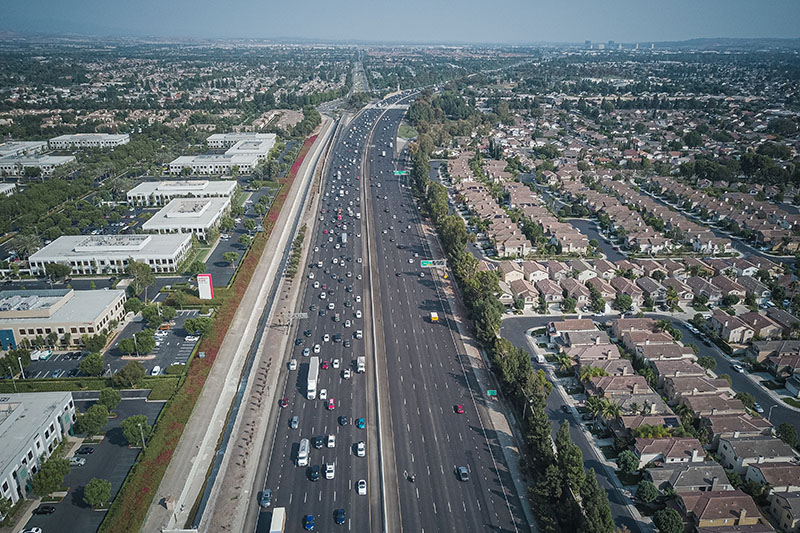
Homogeneity of communities
Urban sprawl has also highlighted social issues because the communities that develop in sprawl are generally upwardly mobile with residents of the same income or social group. This may lead to the polarization of communities and the ghettoization of inner city areas, where only socially disadvantaged people remain.
What are the solutions for urban sprawl?
The effects of urban sprawl are undeniable, but finding a solution to the increasing spread of urbanized neighborhoods is a real challenge.
Academics, environmentalists and policymakers that have explored this issue agree that there is no single solution for mitigating urban sprawl. Change must be delivered using a multifaceted strategy. Here are some elements that may work:
Better town planning
Local and regional planning policies are central to preventing the continued spread of urbanized areas. Municipal authorities can lead in guiding the growth of communities so that they have less environmental impact and concentrate resources in specifically designated areas that spare rural settings, like brownfield development.
A more formal approach to town planning with the development of smart growth or compact development, much like the Garden City Movement in the early 20th century, can help safeguard rural areas while offering homeowners the quality of life they are looking for.
Implementation of sprawl reduction policies
Local authorities can also implement more assertive policies like zoning provisions, specific building permits, and boundaries that direct new developments away from rural or ecologically important land.
Incentivizing redevelopment of existing urban areas
Tax breaks, development density bonuses, and providing development opportunities in urban areas such as ex-industrial or brownfield land may encourage developers to invest in improving urban districts rather than the country.
Authorities can also direct public investments toward the redevelopment of urban areas so that their amenities and housing quality can improve. By improving urban districts, people will be more inclined to stay in them, alleviating pressure on the periphery of cities.
Proactive land acquisition
Local, regional, and state governments can implement land acquisition, purchasing important habitats and parcels of land for conservation purposes.
A new generation of state parks, wildlife reserves, and open spaces could help to educate communities about the importance of preserving green spaces and ensure that ecologically critical areas are protected in perpetuity.
In conclusion
Urban sprawl and its drivers represent a failure in town and city planning amidst market forces that make it advantageous for families to move to newly built suburban communities. The sprawl represents a compromise between the accessibility of work, convenient amenities and entertainment in the city and open spaces and a slower pace of life.
However, in the future, homeowners may have to decide to be either city slickers or country bumpkins!
